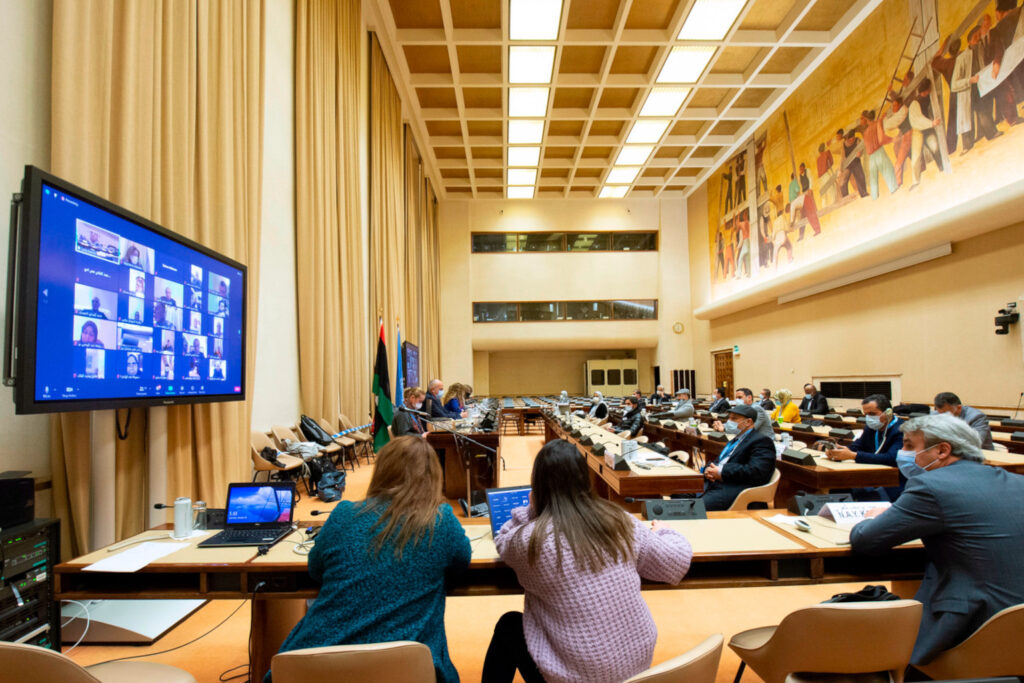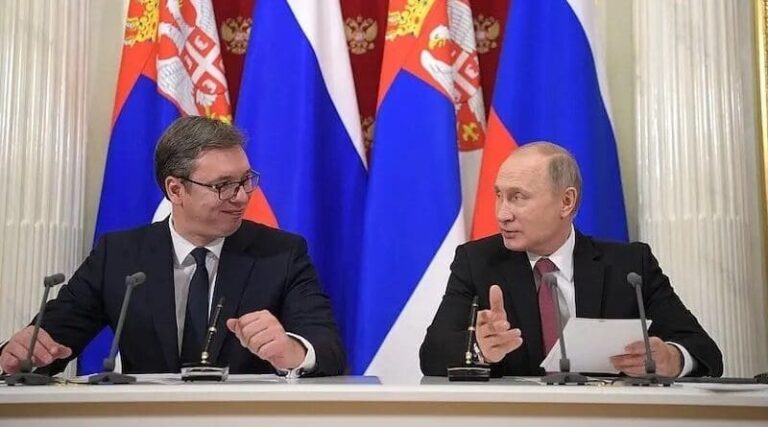In most conflict-afflicted countries, the 2020 Covid-19 pandemic aggravated civil war, political divisions, economic collapse, and humanitarian suffering. Most people predicted that Libya would suffer the same fate as conflict escalated in and around Tripoli in early 2020 and the rising tensions threatened to reignite fighting between the opposing forces of Khalifa Haftar and the Tripoli-based Government of National Accord (GNA). However, in a surprising turn of events, logistical constraints produced a stalemate. An informal ceasefire was announced in August 2020 followed by the signing of a formal truce on 23 October 2020. This created the ideal opportunity for Libyan factions to finally commit to a political roadmap and elections.
Stephanie Williams, Acting Special Representative of the Secretary-General (ASRSG) and Head of the United Nations Support Mission in Libya (UNSMIL), seized this moment to announce the resumption of inclusive intra-Libyan talks. The recommendation was based on Security Council Resolution 2510 that was born out of the 2020 Berlin Conference on Libya. Based on recommendations from the Berlin Conference, UNSMIL created the Libyan Political Dialogue Forum (LPDF) which had the overall objective of finding consensus on a unified government framework and arrangements that would lead to the “holding of national elections in the shortest possible timeframe in order to restore Libya’s sovereignty and the democratic legitimacy of its institutions.”
The LPDF reimagined what inclusivity in peace talks could look like by carefully selecting its participants from key Libyan constituencies based on the principles of fair geographic, ethnic, political, tribal, and social representation. Out of the 75 LPDF participants, 40 were directly drawn from Libyan civil society. From its conception, the LPDF was promoted as a Libyan-led and Libyan-owned process in which multiple voices would be heard. To assist in inclusion, it pioneered the use of artificial intelligence (AI) to enable more than 1000 mostly young Libyans to anonymously engage in five separate sessions of what the UN called “large-scale digital dialogues” wherein natural language processing and machine learning helped to facilitate dialogue between the over 1000 individuals in local dialects and identify points of agreement in the Libyan landscape.
This broad inclusion supposedly meant the LPDF would widen public buy-in and, thus, increase the likelihood of getting to the root cause of Libya’s conflict, minimize the spoiler effect, and increase the legitimacy of the talks. However, forward to 2022, the country was still on the brink of civil war. The LPDF failed to reach a consensus on the eligibility of the presidential candidates and the long awaited Libyan elections that were set for 24 December 2021 were postponed indefinitely. Furthermore, foreign mercenaries were still present in the country, and tensions between the Libyan factions were rising rapidly.
Scholars point out an inclusion versus effectiveness dilemma to explain why peace talks often fail. These scholars claim that effectiveness decreases when you include more civil society actors because there are too many voices to consider. But this argument oversimplifies the problem. This article presents three explanations for why this inclusion versus effectiveness dilemma exists. First, civil society actors generally take a human rights approach toward the treatment of norm violators, which decreases the likelihood of reaching a consensus. Second, increasing civil society participation shifts the focus away from the external political actors that hold de facto power, thereby raising the likelihood of a spoiler effect. Third, greater civil society participation creates the illusion that the views of the people are being better represented. But this is not necessarily true because of the intersectionality of identities.
These explanations intend to inform how civil society’s participation in peace talks can become more meaningful, wherein their voices are not just heard but are also able to contribute to achieving a favorable outcome. As technology and AI tools are increasingly being used to push the boundaries of inclusion in peace talks, we must consider the inclusion-effectiveness dilemma and investigate explanations as to why the dilemma exists. This article will begin by establishing the conceptual framework of the inclusion-effectiveness dilemma followed by an explanation of why it exists using evidence from the 2020 LPDF talks.
Conceptual framework
Inclusion is often recognized as a necessary step towards long-term peace but more inclusion in the negotiation process does not automatically increase the likelihood of success. The current debate is centered around increasing local ownership to allow for wider and more meaningful participation. But this leads to a problem experts call the inclusion versus effectiveness dilemma, where the noise of too many voices obstructs the chances of an agreement. Several authors have been trying to unpack this inclusion-effectiveness dilemma to ensure meaningful inclusion through a series of questions:
- Does inclusion mean direct participation at the negotiation table?
- Who should be allowed to participate?
- How does the selection of participants take place?
- Is there an ideal time for participation to occur?
These questions are important, but they do not address why the inclusion-effectiveness dilemma is at play. The following aims to tackle this question.
First, more inclusion decreases the likelihood of reaching a consensus because civil society actors take a human rights approach toward the treatment of norm violators instead of a conflict resolution approach. The human rights view holds that norm violators must be prosecuted, shunned, stigmatized, and stripped of any form of power. In contrast, the conflict resolution view prioritizes delivery of an agreement and implementation over prosecuting norm violators. It is challenging for civil society actors to assume the conflict resolution position because they are direct or indirect victims of acts perpetrated by those they are forced to negotiate with. Therefore, it is important for third-party mediators or oversight bodies such as the UN to educate civil society on the short- and long-term costs of not reaching an agreement (such as the resumption of violence) before taking a seat at the negotiation table.
Second, increasing local ownership of peace talks does not change the power dynamics that drive conflict. There is a higher chance of a spoiler effect as the focus shifts away from the external actors who might hold the most power. Spoilers are defined as “leaders and parties who believe the emerging peace threatens their power, world view, and interests and who use violence to undermine attempts to achieve it.” In many conflicts, external actors fight proxy wars and benefit from their continuance either for political or economic reasons. These external actors do not see it in their best interest for a peace agreement and can present themselves as spoilers at any stage of the negotiations. In contrast, civil society actors tend to hold the least or no power to influence whether a peace agreement can be reached or implemented. Hence, it is important in peace talks to not overlook the factors that threaten the likelihood of reaching a favorable agreement (such as the presence of foreign mercenaries and the lack of support of conflict allies).
Third, more participation of civil society in peace talks creates the illusion that the wider society is being represented better. But this is not necessarily the case because of the concept of the intersectionality of identities. Intersectionality refers to how multiple factors or systems of power and oppression—such as gender, race, class, age, and sexuality—intersect in defining the societal structures and people’s lived experiences. Initially, experts found that the concerns of women and youth were not being represented well in peace talks because these groups did not have a seat at the negotiation table. However, this has changed over the years through the introduction of Security Council Resolutions 1325 and 2250 that aim at increasing the participation of women and youth respectfully. Deeper analysis into different types of conflict shows that the intersectionality of identities affects not only the kinds of violence people might suffer but also the varied interests, needs, agencies, and views toward how to achieve sustainable peace. It is not enough to just increase the participation of civil society actors but to also evaluate what groups are being marginalized the most (usually found at the intersection of two or more identities) and ensure their views are being heard at the negotiation table. This will allow us to achieve the “best” representation for a specific conflict instead of focusing on the unattainable “full” representation.
Case Analysis
Decreased likelihood of reaching a consensus
In 2020, the LDPF failed when its participants were unable to reach a consensus on the eligibility requirements for the parliamentary and presidential elections. Scholars presenting the inclusion-effectiveness dilemma would attribute this failure to the fact that there were too many voices to reach a consensus. But there is more to dissect. Civil society actors take a human rights approach to the treatment of norm violators. They believe that norm violators should be stripped of power rather than compromising with them to reach an agreement. This was illustrated when 64% of LDPF participants voted for a criterion that would exclude individuals who had a role in causing or contributing to conflict in Libya from candidacy for the interim Government of National Unity (GNU) and subsequent December 2021 elections. On the other hand, the remaining LPDF members thought Saif al-Qaddafi, the former dictator’s son, and General Haftar had a good chance of winning elections and called for the eligibility criteria to be adjusted to allow for their candidacy. Since the threshold agreed upon for the vote was 75%, this criterion was not included and the LPDF failed to achieve consensus.
This theory comparing human rights and conflict resolution approaches can be applied to other cases too. Interestingly, the delegation of victims in Colombia’s 2016 peace talk presents the counterfactual showing the importance of taking a conflict resolution approach to negotiations. While most Colombian NGOs have consistently demanded penal justice for human rights violations perpetrated by state and non-state actors alike, the victims’ delegates who traveled to Havana understood the value of reaching an agreement. One delegate’s words evoked the peace versus justice debate, acknowledging the importance of rethinking the accountability approach, so as not to impede the peace process. She said, “I am aware that the FARC (the perpetrator) is not going to sit to negotiate to go to jail.” This example illustrates exactly how important it is to take a conflict resolution approach to the treatment of norm violators to form a consensus as opposed to a human rights approach seen in the case of Libya.
Increased the opportunities for a spoiler effect
The LDPF was more focused on ensuring Libyan involvement in the talks rather than including the support of external actors who have the power to influence the outcome and implementation of any form of the peace agreement. This asymmetry was represented by the fact that 40 out of the 75 LPDF members were civil society actors while the rest were political actors from various Libyan factions. This overemphasis on civil society actors caused the LPDF to overlook the need to first focus on creating conditions conducive to elections. One of the key factors was to ensure that foreign mercenaries from Turkey, Russia, and other countries left, as per the conditions laid out in the October 2020 ceasefire. These foreign mercenaries were present in the country when the LPDF talks took place and posed the greatest threat to spoil and undermine the peace talks. Hence, the LPDF should have tried more to get backing from Turkey and Russia. This point can also be applied to the Syrian conflict where UN mediator Staffan de Mistura understood the importance of the voice of the local people and institutionalized civil society’s participation when the intra-Syrian political talks resumed under his auspices in January 2016. But later, he realized that civil society inclusion had its limits, especially in proxy wars. He noted that the continuous inclusion of civil society risked sending a wrong impression of progress and legitimacy that would mask fundamental challenges such as the presence of foreign mercenaries instead of addressing them. This phenomenon is exactly what is at play in Libya.
False assumption of wide support
An official statement by UNSMIL claimed that the 75 LPDF participants were “representative of the full social and political spectrum of the Libyan society.” But we need to be cautious with such claims since full representation is difficult to achieve because the intersection of identities changes the way an individual views the world. While it appeared on paper that civil society represented all sections of society, a poll of around 1000 Libyan people showed otherwise. According to the poll that gauged the opinions of candidates for the interim government, only 65% of the respondents were satisfied with the selection of Abdul Hamid Dbeiba as the new Prime Minister. Meanwhile, only 57% and 52% of the respondents were satisfied with the selection of Mohamed Manfi and Mousa Al Kouni respectively to the interim government. These figures make it clear that although UNSMIL tried to include multiple civil society actors, they did not account for how big a role the intersectionality of identities plays. In other words, the 75 LPDF members were not as representative of the Libyan population as they appeared because they failed to understand how various intersections of identities experience the conflict differently. Further illustrating this point is the Colombia case, which was widely lauded for being inclusive. One of its key criticisms was that Colombia’s Peace Accord did not assume an intersectional perspective, as it recognized the experiences of women and indigenous peoples, but not explicitly those at the intersection of the two: indigenous women.
Conclusion
Inclusion has become a buzzword in the conflict negotiation space. Up until now, the argument has been that more inclusion of civil society actors leads to better peace outcomes. But many scholars and practitioners are starting to become more critical of this claim. Current discourse points to an inclusion-effectiveness dilemma, and this article delves deeper into three explanations for why this dilemma exists using the 2020 LPDF talks in Libya to present the argument.
The first explanation is that civil society actors take a human rights approach toward the treatment of norm violators, which decreases the likelihood of reaching a consensus. The second explanation presents that increasing civil society participation shifts the focus away from the external political actors that hold power and influence, thereby increasing the chances of a spoiler effect. The third explanation is that more civil society participation creates the illusion of broad representation, but this does not hold true due to the intersectionality of identities.
The Libyan case is fascinating to understand the concept of inclusion in peace talks. Its use of technology and AI to ensure wide participation during the heights of the pandemic changed the way we think about inclusion in peace talks. This article does not call to reduce the number of civil society actors involved in peace talks. Rather, it makes an argument for more meaningful inclusion by understanding the limits of simply increasing the number of seats for civil society actors at the negotiating table.
References
Blanc, J. and Brown, F.Z. 2020. “Conflict zones in the time of coronavirus: War and war by other means”. Carnegie Endowment for International Peace. https://carnegieendowment.org/2020/12/17/conflict-zones-in-time-of-coronavirus-war-and-war-by-other-means-pub-83462
Carl, A. et al. 2019. “Navigating inclusion in peace processes, Inclusion in peace processes Accord.” Conciliation Resources. https://www.c-r.org/accord/inclusion-peace-processes/introduction-navigating-inclusion-peace-processes
Cuhadar, E. 2020. “Understanding resistance to inclusive peace processes”. United States Institute of Peace. https://www.usip.org/publications/2020/03/understanding-resistance-inclusive-peace-processes
Masood Alavi, D., Wählisch, M., Irwin, C., & Konya, A. 2022. “Using Artificial Intelligence for Peacebuilding. Journal of Peacebuilding & Development”, 17(2), 239-243. https://doi.org/10.1177/15423166221102757
Mendes, I. 2019. “Inclusion and Political Representation in Peace Negotiations: The Case of the Colombian Victims’ Delegations”. Journal of Politics in Latin America, 11(3), 272-297. https://doi.org/10.1177/1866802X19889756
Mertus, J,. Helsing, J. 2006. “Human Rights and Conflict: Exploring the Links between Rights, Law, and Peacebuilding”. US Institute of Peace Press.
Person and Mcdowall, A. 2022. “Analysis: Libya’s Festering Crisis Risks Slide back to war, Reuters”. Thomson Reuters. https://www.reuters.com/world/africa/libyas-festering-crisis-risks-slide-back-war-2022-11-17/
Stavrevska, E.B. and Smith, S. 2020. “Intersectionality and peace, The Palgrave Encyclopedia of Peace and Conflict Studies”. Springer International Publishing. https://link.springer.com/referenceworkentry/10.1007/978-3-030-11795-5_120-1
Stedman, S. 1997. “Spoiler Problems in Peace Processes”. International Security, Vol. 22, No. 2, pp. 5-53. https://www.jstor.org/stable/2539366
United Nations. 2020. “Libya ceasefire: Un relaunches inclusive political forum, amid growing sense of hope”. United Nations. https://news.un.org/en/story/2020/10/1076122
UNSMIL. 2020. “UNSMIL statement on the resumption of intra-Libyan political and military talks”. UNSMIL. https://unsmil.unmissions.org/unsmil-statement-resumption-intra-libyan-political-and-military-talks
Wehrey, F. 2020. “The pandemic’s ripple effects are among Libya’s many miseries – conflict zones in the time of coronavirus: War and war by other means”. Carnegie Endowment for International Peace. https://carnegieendowment.org/2020/12/17/pandemic-s-ripple-effects-are-among-libya-s-many-miseries-pub-83470
Hammady, O. (2022) What went wrong with Libya’s failed elections, Foreign Policy. https://foreignpolicy.com/2022/02/18/libya-elections-2021-postponed/
Ferstman, C. and Elmessiry, M. (2021) Victims’ voices: The Libyan Political Dialogue Forum, Lawyers for Justice in Libya. https://www.libyanjustice.org/news/victims-voices-the-libyan-political-dialogue-forum
Brett, R. (2022) Victim-centered peacemaking: The Colombian experience. https://www.tandfonline.com/doi/full/10.1080/17502977.2022.2104437
McDowall , A. (2020) Factbox: Who’s involved in Libya’s war and why. Thomson Reuters. https://www.reuters.com/article/us-libya-security-intervention-factbox-idUSKBN2351W0/
Diwan (2021) National Opinion Poll of the outcome of the Libyan Political Dialogue Forum February 9, 2021, Diwan.




